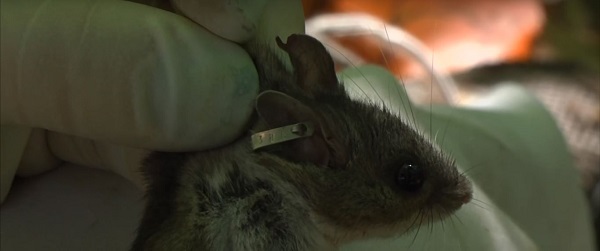Even though mice are most often are considered pests, most some people want to relocate them once they have trapped them.
Relocating mice back into the wild seems like a worthwhile and fulfilling gesture, but there are many uncertainties. Where
do I find a legal drop site? How far should I take them? What looks like a good area? How can I make the relocation less
stressful for the mouse? How far away must I go to assure they don’t return? Here are some helpful answers to guide
you.

All animals are in grave danger when being released into an alien environment. Mice are no different. They don’t know where they
are and everything is strange and unfamiliar. This makes it very difficult for the mouse to find food and water. They don’t know
about the area’s predators. They don’t have any type of shelter yet. And they don’t know if the other mice they might see are aggressive.
To improve your mouse’s chances of survival here are a few tips. Try to release more than one mouse at a time. A group will have a better
chance of forming a community. Investigate the site before you drop them off to be sure there is food, water, and shelter. Make sure to ask
local authorities or the land owner if you are allowed to relocate mice there. Some farmers, ranchers, or subdivisions may not want you
dropping off a family of mice in their backyard! Are there plenty of wild grains, seed, or nut bearing plants and trees to sustain them
for a while? Look for continuous sources of water.
Does it have good thick ground cover and underbrush to hide in? Is it too close to an overly populated area? Will nearby cats and dogs be a problem?
Human neighborhoods can be a problem. These will be a great temptation for your mice and they might end up killed anyway. Do you see signs of other
mice life in the area? Pick your release time to correspond with the mouse’s waking schedule. Relocation would be best done at dusk/dark for mice.
They are most active at this time and l will want to explore their new home. Pick a day with pleasant weather. The nicer it is out, the more the mice
will be comfortable checking out their new surroundings. It might even be a good idea to leave some supplemental food like nut butter, corn, or seeds
to help your mice until they learn the lay of the land. Although you may feel that this is the humane thing to do, your mice have a slim chance of
survival even if you take all these steps to ensure a happy move. Studies show that a mouse can find its way back to a former nesting ground from
as far away as 6 miles. If you choose a good relocation spot where your mice can be happy and thrive they may survive, and are less likely to return.
Go back to the
How to get rid of mice in the attic home page. You might also want to read about
how to kill mice and why the use
of snap traps is better than
mouse poison. Read an analysis of the different types of traps and how to use them on the
how to trap mice page.
Learn why
bait is not as important as trap type, placement and location. Also read a full analysis of
mouse repellent to understand why it
never works. If you see droppings and want to identify them, read the
mouse poop page. If you need to hire professional help, read about
how much does mouse removal cost?
or you can read this site to learn how to do it yourself. Feel free to email me about Do relocated mice survive?